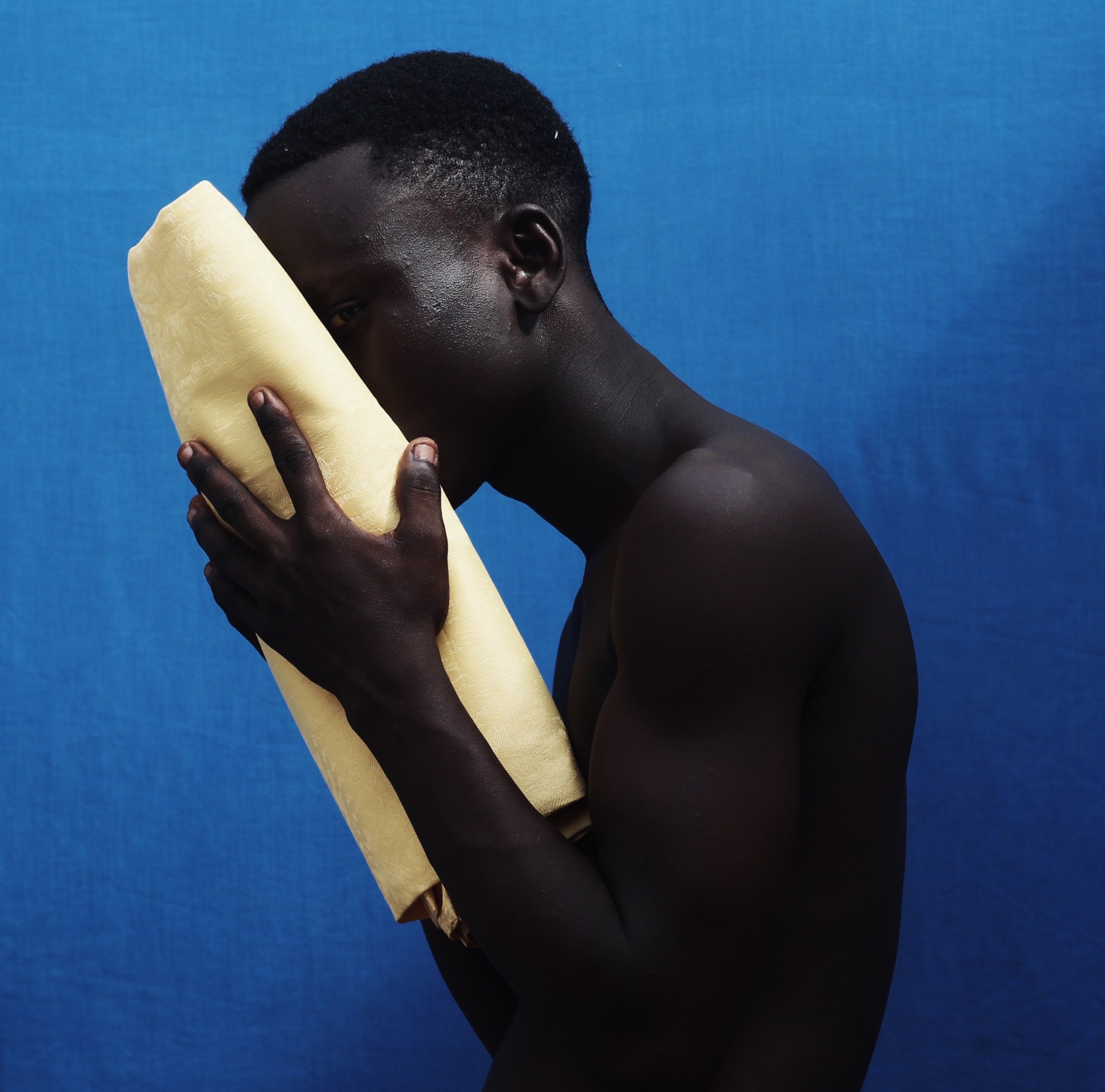Nana Yaw Oduro is a Ghanaian photographer based in Accra. While his vibrant and striking compositions might appear influenced by cinematography or painting, Nana’s work is, in fact, shaped by another medium: poetry. If his process reveals anything, it’s that he’s more theater director than photographer. Unsatisfied with the results of self-portraiture, he views his models as proxies for himself, whom he can position to actualize his deliberate mise-en-scènes of figures draped in netted fabric or artfully pleating a sheet of paper.
Nana renders his subjects as sculptural silhouettes, set against a stretch of umber earth or a solid blue wall. His relationship to color was forged by the vividness of his native landscape, but the backgrounds are framed in such a way as to appear serenely placeless.
During the presentation at Afikaris gallery last week, in the Discovery section of Photo London, we spoke with Nana about Charles Bukowski, titling photographs like micro-poems and gradually becoming more open-minded on set.
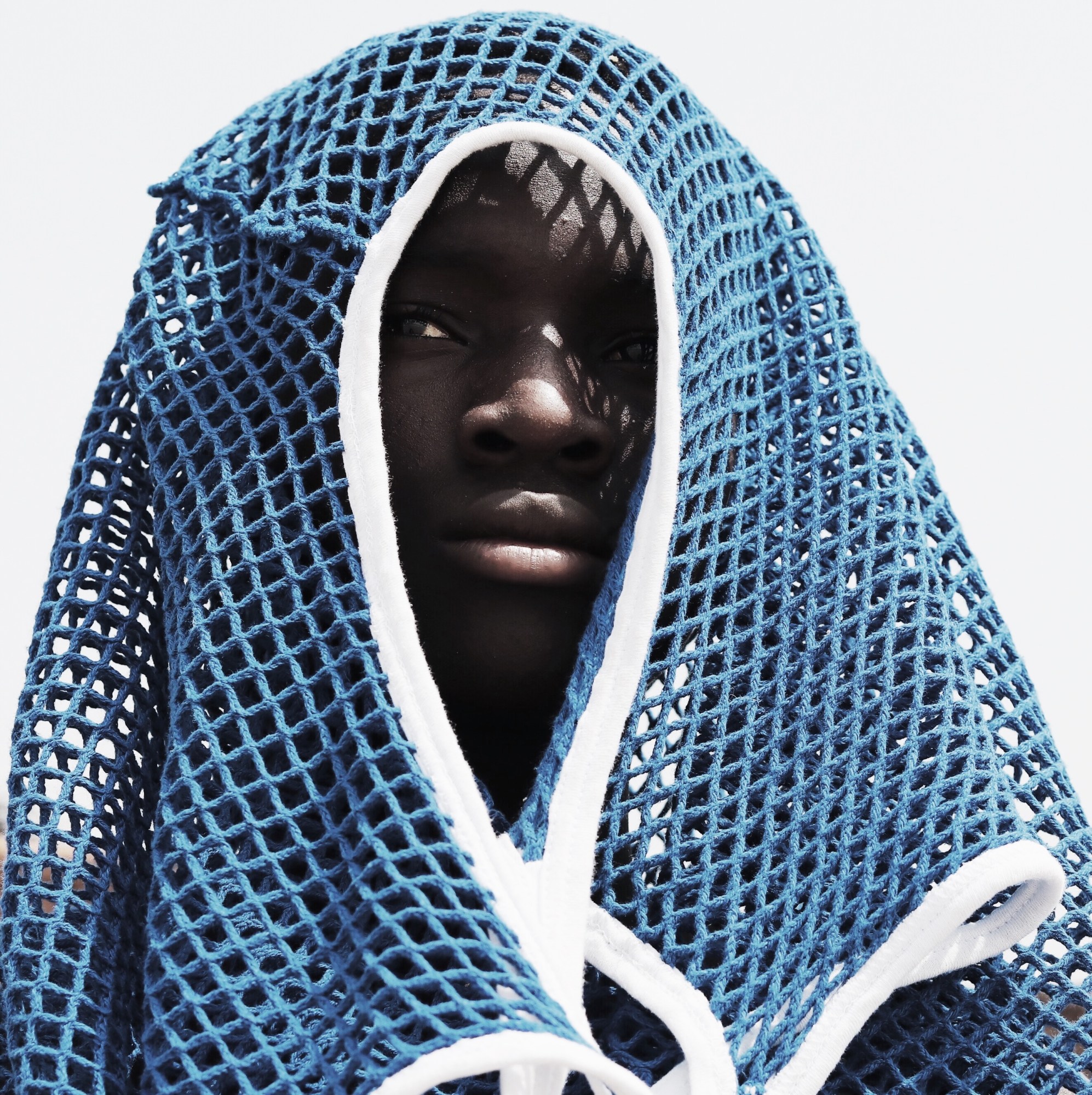
Tell me about your formative influences growing up in Accra?
I was always with different people, so I was learning subconsciously: picking up traits and seeing how people process boyhood and masculinity. Society tells us we shouldn’t behave in some ways, but nobody has the right to dictate how boys should be. I had to bridge these things to reach self-acceptance.
What in particular you were reacting against?
The majority is about toughness. I wasn’t seen as “manly” enough. That was a challenge. Not being the toughest person, you face a lot of pain — that was my experience from boyhood. So I tried to express those emotions in my images: I wanted to empower people who are still in the era of boyhood. People feel threatened when you have a kind of softness, when you embrace that; it becomes a problem because it’s not conventional. My whole body of work is based on people who are being seen as a problem. You should not be held up by somebody else’s ideas of who you should be. Accept your soft side. You don’t need that toxic masculinity to show you’re powerful; you don’t have to succumb.
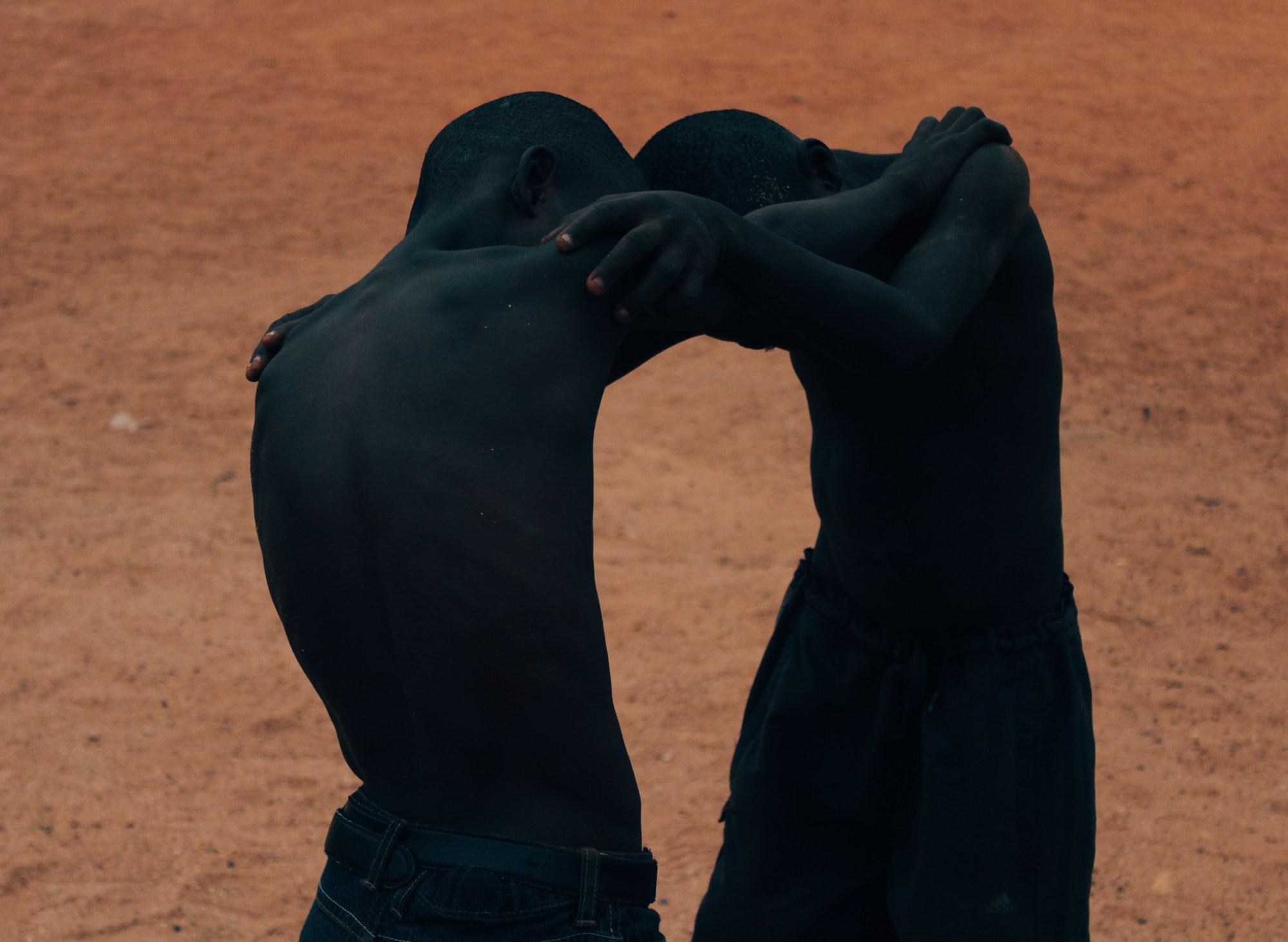
Were there any figures, artistically, who helped you champion this vulnerability and fragility, this more complex masculinity?
Charles Bukowski. I was inspired to be an artist not because of images. I was inspired because I read poems. My artistry evolved from poetry. I used to write poems, and then I wanted to visualize everything I was writing. People don’t like to read as much as they want to see things. I came across Charles Bukowski. And Rainer Maria Rilke. And Bob Dylan. I am very inspired by what I read. These guys showed me the highly unconventional. Bukowski was not the kind of poet being taught at school — I did literature for a semester. I think he was, like, fifty-something before he was writing stuff. So he inspired me to believe I don’t have to shoot images in this kind of way to be accepted by everybody. I don’t have to wait for somebody to come and tag my work as art. Once I say “this is poetry,” it is poetry.
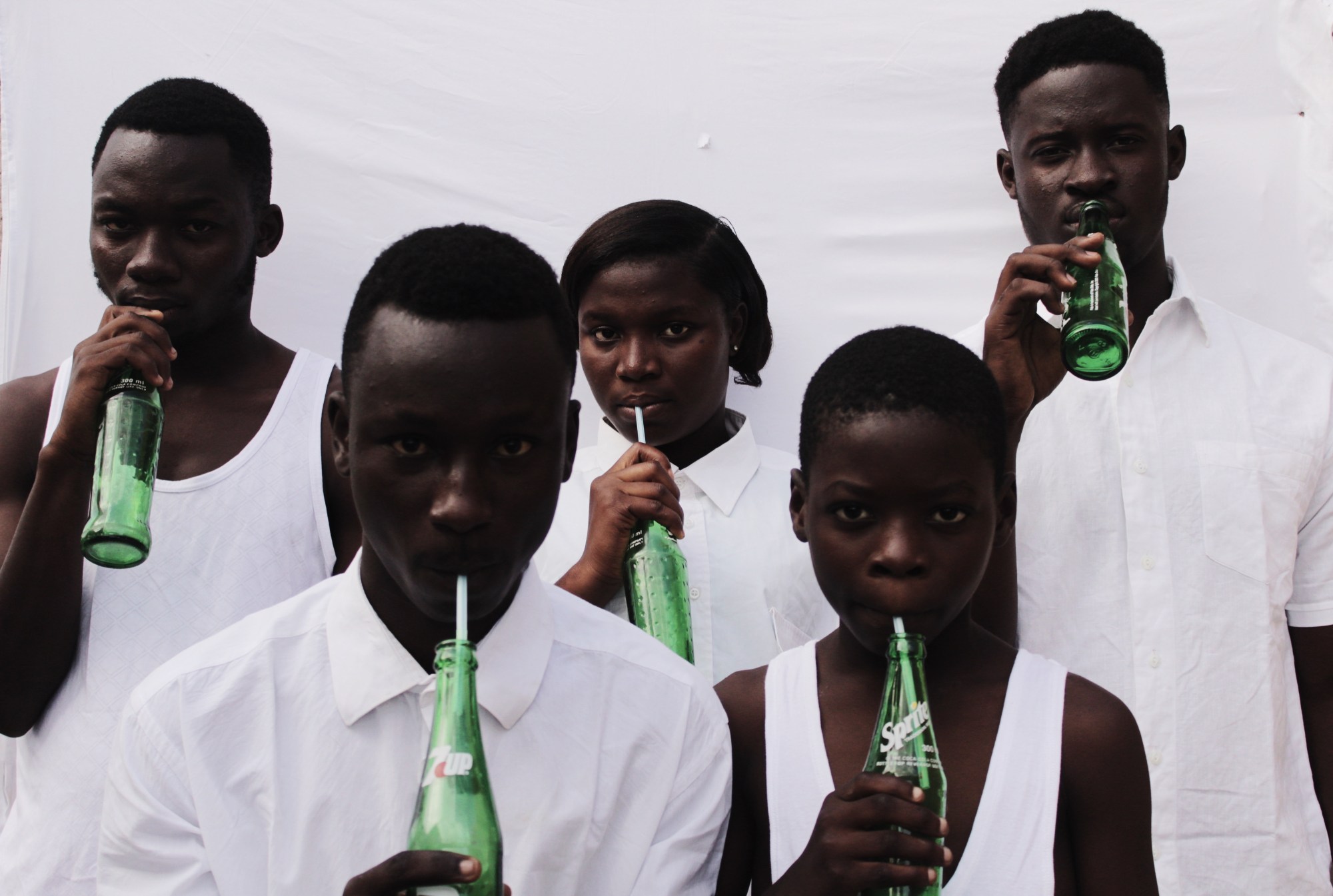
You have such a bold relationship to color. What informed this strong visual vocabulary?
Where I’m from, everything is color. Houses are colorful, cars are colorful. Everything is contrast, because the sun hits every surface really hard. So, growing up, you have this visual intelligence already. It’s something incorporated from childhood, and the environment enhances it. So I make good use of it: it’s just knowing the right colors to put together. I’m trying to communicate an idea, feelings, thoughts — but it has to be beautiful also, like, visually pleasant. It’s not something you would struggle with if you have that artistic passion. If you don’t know how, then maybe you don’t just don’t have it.
Your photos are so stylized and carefully composed. Can you tell me about this process from behind-the-scenes, what a shoot is like to create these configurations?
I reminisce about my life, I get an idea and then try to visualize and communicate through images. I find the best person to represent me. I have a few options I go to; I take the best one to fit the idea. I put the environment together, although sometimes you just need a blue sky. Or vast land, or to be by the shore. So you have the idea, the person you choose and the best environment — sometimes a natural environment, sometimes one you create, maybe using a cloth or props or something — and maybe fruit.
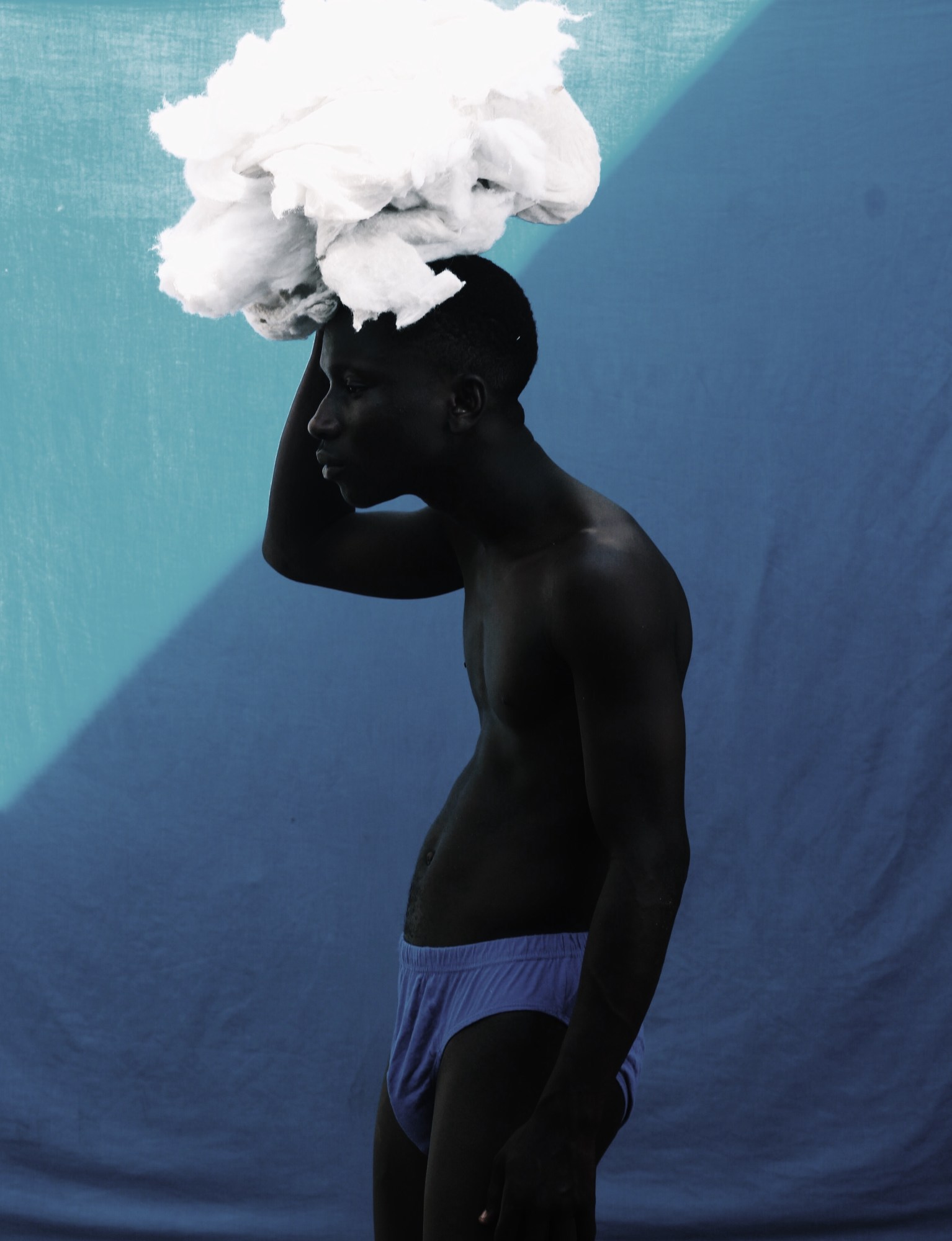
Do you have clear ideas ahead of time, or are you improvising on set? Especially working with people you know, do they contribute a bit?
I don’t sit down with a committee to discuss it. I have a vivid image, so I’m not going to be too open-minded on set. This is what I’m going with. This is what I’m shooting. I’m going to shoot what I think. If I want a facial expression that shows anguish or excitement or something, I’m going to go by that.
But sometimes, I’ve come to understand from experience that the models are going to give you more options than you even asked for. Sometimes your idea even gets more focused because the subject brought something to the images you didn’t even realize on set. Somebody who knows you wants to help your craft — they get in character, and it helps when they put in energy. I try to make the models comfortable: I want somebody to go all the way for me. So sometimes I don’t go quite so strictly from the initial idea. But picking the perfect subject, the props and the environment for shooting: those are the basics I need.
When you’re showing work in an international context, like Photo London, or even putting your work out there on social media, have you gotten any surprising reactions? You have your vision, but people can extract different things from it.
It’s good to see your work travel. I did something in this little environment —with family, friends, a camera — then it’s on screens, it’s outside of that in London or in a solo exhibition. It’s great.
I believe my images are basically poetry, and I think poetry is the greatest thing in the world. You don’t always understand what you’re reading, but it’s the greatest thing. The poet doesn’t know me — he’s just writing about himself and his life and experiences — but I can relate in my own way.
As a poet myself, I think an image should have a good title, to make the audience reflect in a particular direction, to understand what I’m trying to communicate. But I have never been a fan of explaining my work. Everything is about perspective, and the way you see art is definitely not the way I’m going to see my work. People are going to connect in their own way. We can both read a poem, but you relate differently. You have your meaning, I have mine. Let them see it separately, enjoy it.
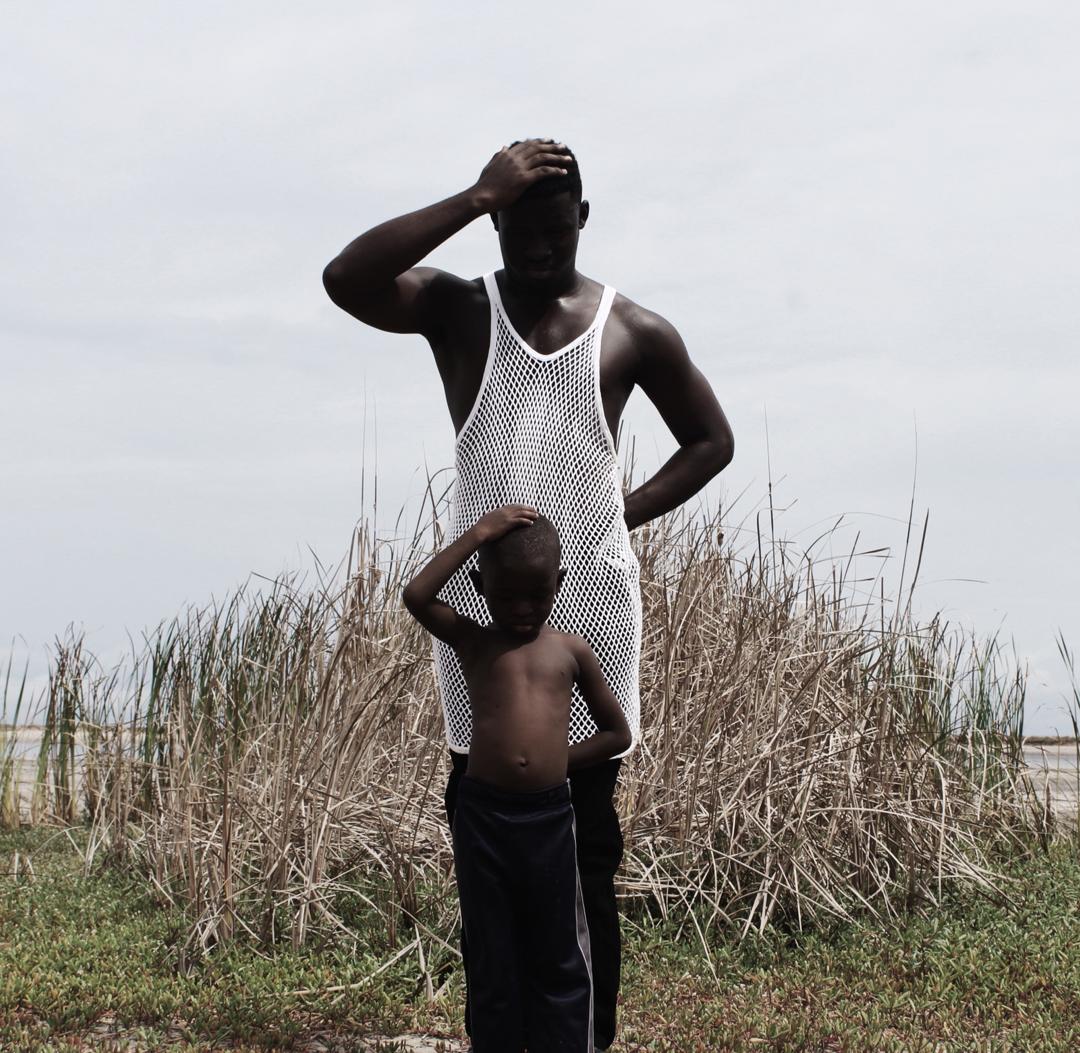
Follow i-D on Instagram and TikTok for more photography.
Credits
Photography Nana Yaw Oduro
